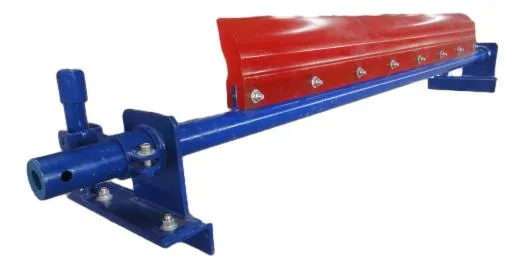 Afrikaans
Afrikaans  Albanian
Albanian  Amharic
Amharic  Arabic
Arabic  Armenian
Armenian  Azerbaijani
Azerbaijani  Basque
Basque  Belarusian
Belarusian  Bengali
Bengali  Bosnian
Bosnian  Bulgarian
Bulgarian  Catalan
Catalan  Cebuano
Cebuano  Corsican
Corsican  Croatian
Croatian  Czech
Czech  Danish
Danish  Dutch
Dutch  English
English  Esperanto
Esperanto  Estonian
Estonian  Finnish
Finnish  French
French  Frisian
Frisian  Galician
Galician  Georgian
Georgian  German
German  Greek
Greek  Gujarati
Gujarati  Haitian Creole
Haitian Creole  hausa
hausa  hawaiian
hawaiian  Hebrew
Hebrew  Hindi
Hindi  Miao
Miao  Hungarian
Hungarian  Icelandic
Icelandic  igbo
igbo  Indonesian
Indonesian  irish
irish  Italian
Italian  Japanese
Japanese  Javanese
Javanese  Kannada
Kannada  kazakh
kazakh  Khmer
Khmer  Rwandese
Rwandese  Korean
Korean  Kurdish
Kurdish  Kyrgyz
Kyrgyz  Lao
Lao  Latin
Latin  Latvian
Latvian  Lithuanian
Lithuanian  Luxembourgish
Luxembourgish  Macedonian
Macedonian  Malgashi
Malgashi  Malay
Malay  Malayalam
Malayalam  Maltese
Maltese  Maori
Maori  Marathi
Marathi  Mongolian
Mongolian  Myanmar
Myanmar  Nepali
Nepali  Norwegian
Norwegian  Norwegian
Norwegian  Occitan
Occitan  Pashto
Pashto  Persian
Persian  Polish
Polish  Portuguese
Portuguese  Punjabi
Punjabi  Romanian
Romanian  Russian
Russian  Samoan
Samoan  Scottish Gaelic
Scottish Gaelic  Serbian
Serbian  Sesotho
Sesotho  Shona
Shona  Sindhi
Sindhi  Sinhala
Sinhala  Slovak
Slovak  Slovenian
Slovenian  Somali
Somali  Spanish
Spanish  Sundanese
Sundanese  Swahili
Swahili  Swedish
Swedish  Tagalog
Tagalog  Tajik
Tajik  Tamil
Tamil  Tatar
Tatar  Telugu
Telugu  Thai
Thai  Turkish
Turkish  Turkmen
Turkmen  Ukrainian
Ukrainian  Urdu
Urdu  Uighur
Uighur  Uzbek
Uzbek  Vietnamese
Vietnamese  Welsh
Welsh  Bantu
Bantu  Yiddish
Yiddish  Yoruba
Yoruba  Zulu
Zulu Efficient Conveyor Systems with Durable Carrying Rollers for Enhanced Performance
Understanding Conveyor Carrying Rollers Essential Components for Efficient Material Handling
In industrial and manufacturing settings, efficiency and reliability are paramount. One of the most crucial components that contribute to the overall operational efficiency of conveyor systems is the conveyor carrying roller. These rollers are vital for the smooth transport of materials across a variety of industries, including mining, agriculture, logistics, and packaging. In this article, we will explore the role of conveyor carrying rollers, their types, applications, and maintenance, which play significant roles in the efficiency of conveyor systems.
What Are Conveyor Carrying Rollers?
Conveyor carrying rollers are cylindrical components fitted along conveyor belts to facilitate the movement of goods. They support the weight of the material being transported while allowing for smooth operation and minimal friction. Typically made from durable materials such as steel, rubber, or plastic, these rollers are designed to withstand heavy loads, harsh environments, and continuous use.
Types of Conveyor Carrying Rollers
There are several types of conveyor carrying rollers, each serving specific functions based on the nature of the application
1. Flat Rollers These are the most common type and are used to support the conveyor belt as it moves products along the line. Flat rollers maintain belt tension and alignment while providing a smooth surface for material movement.
2. Inclined Rollers Designed for inclined conveyor systems, these rollers help in maneuvering materials up or down slopes, making them essential for multi-level operations.
3. Return Rollers Used on the underside of conveyor belts, return rollers guide the belt back to the start of the system. They ensure the belt operates without sagging and maintain its structure during the return cycle.
conveyor carrying roller

Applications Across Industries
Conveyor carrying rollers find applications in various sectors. In manufacturing plants, they are used for transporting finished products from assembly lines to packaging stations. In mining, these rollers support the transportation of heavy materials like minerals and ores over long distances. In warehouses, they facilitate the movement of goods, enhancing the efficiency of order fulfillment processes.
Maintenance for Longevity
To ensure the longevity and efficiency of conveyor carrying rollers, regular maintenance is essential. Here are some best practices
- Routine Inspections Regularly examine rollers for signs of wear, misalignment, and damage. Early detection of issues can prevent costly downtime.
- Lubrication Adequately lubricate the roller bearings to reduce friction and prevent premature wear.
- Cleaning Remove debris or buildup around rollers to maintain optimal performance and prevent blockages.
- Replacement Timely replacement of worn-out rollers is vital. Operating with damaged rollers can lead to increased energy consumption and decreased overall efficiency.
Conclusion
Conveyor carrying rollers are indispensable components that play a critical role in the efficiency of material handling systems. Understanding their types and applications, along with performing regular maintenance, can significantly enhance the operational reliability of conveyor systems. As industries continue to evolve and demand greater efficiency, investing in high-quality conveyor rollers and adopting effective maintenance practices will ensure that businesses remain competitive in an increasingly challenging marketplace. By prioritizing these aspects, companies can optimize their operations, reduce downtime, and enhance productivity, paving the way for sustained success in the future.
-
Revolutionizing Conveyor Reliability with Advanced Rubber Lagging PulleysNewsJul.22,2025
-
Powering Precision and Durability with Expert Manufacturers of Conveyor ComponentsNewsJul.22,2025
-
Optimizing Conveyor Systems with Advanced Conveyor AccessoriesNewsJul.22,2025
-
Maximize Conveyor Efficiency with Quality Conveyor Idler PulleysNewsJul.22,2025
-
Future-Proof Your Conveyor System with High-Performance Polyurethane RollerNewsJul.22,2025
-
Driving Efficiency Forward with Quality Idlers and RollersNewsJul.22,2025





























